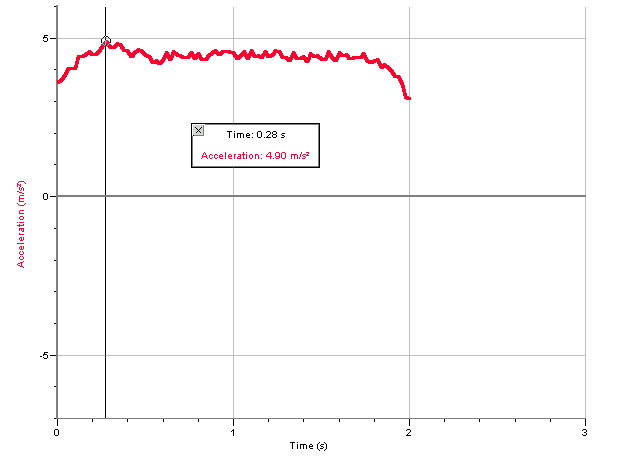Coefficients of Friction for Granite
An educational, fair use website
The coefficient of friction is defined as the ratio of frictional force (ƒ) versus normal force (N). It is represented by the equation
μ=ƒ /N
There are two kinds of coefficients of friction: static and kinetic. When the object is in motion, the frictional force is kinetic. The coefficient of kinetic friction is generally lower than the coefficient of static friction on the same surface. The coefficients of friction are independent of the surface area in contact.
Procedure:
- First you tape the low-G accelerometer on the end of the surface (in this case, a slab of granite).
- Next, place the object whose coefficient of friction is to be measured on the surface.
- Slowly lift one end of the surface until the material starts sliding down the incline, away from the accelerometer.
- The accelerometer will measure the component of the acceleration due to gravity parallel to the surface. LoggerPro will record the acceleration on a graph. Take the acceleration value at the point where the object begins sliding down the incline. On the graph it should be where the value jumps.
- Repeat steps 2-4 with different materials.
Analysis:
The coefficient of static friction for each material is found by this formula, where ƒ is the friction force and N is the normal force:
μ=ƒ/N
In the case of an incline however, to find μ, first you have to find the angle of the incline. The acceleration due to gravity (g) vector is directed downwards while the measured acceleration is directed parallel to the incline.
 |
| sin θ = a/g → θ = sin−1 (a/g) |
where a is the acceleration you found from the graphs.
On an incline, weight is directed downwards. The weight is made up of two components: the parallel weight (W//) and the perpendicular weight (W⊥). The angle of the incline is the same as the angle between the weight directed downwards (W = mg) and the perpendicular weight. The forces acting on the object are the W// and the force of static friction (when it is not moving; a = 0). Therefore:
Net Force = ma = 0
W//–ƒ = 0
mg sin θ–μmg cos θ = 0
g sin θ = μg cos θ
μ = tan θ
| Material | a (m/s2) | θ (°) | μs |
|---|---|---|---|
| copper penny | 3.47 | 20.74 | 0.38 |
| paper | 4.59 | 27.93 | 0.53 |
| granite | 3.87 | 23.26 | 0.43 |
| aluminum | 3.75 | 22.50 | 0.41 |

Matt Grabczynski, Michelle Fung, William "The Doctor" Feng, Brittany Mejia -- 2005
Students Choice:
- Electricity & Magnetism
- Acceleration
- Index of refraction of various household liquids
- Coefficients of Friction